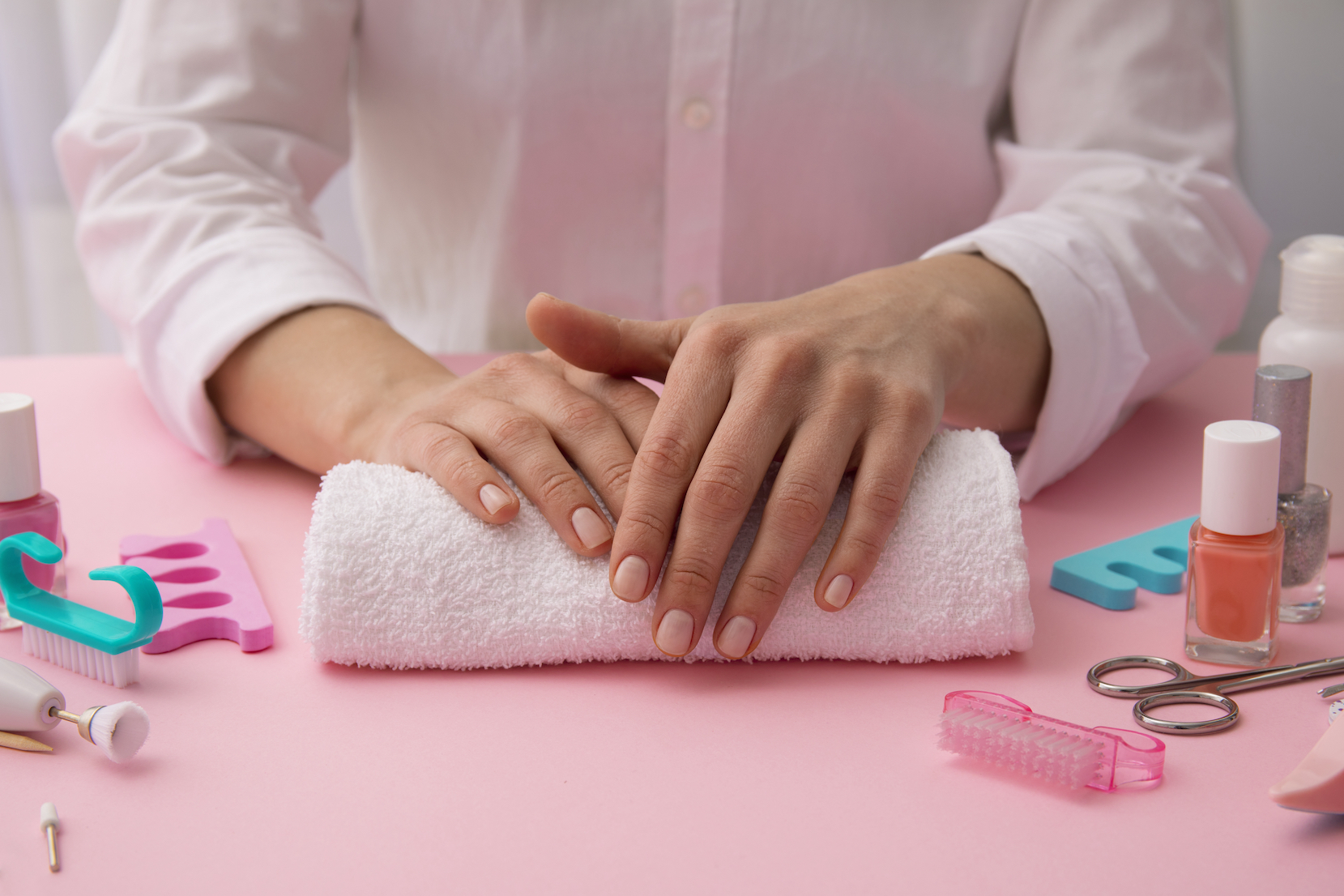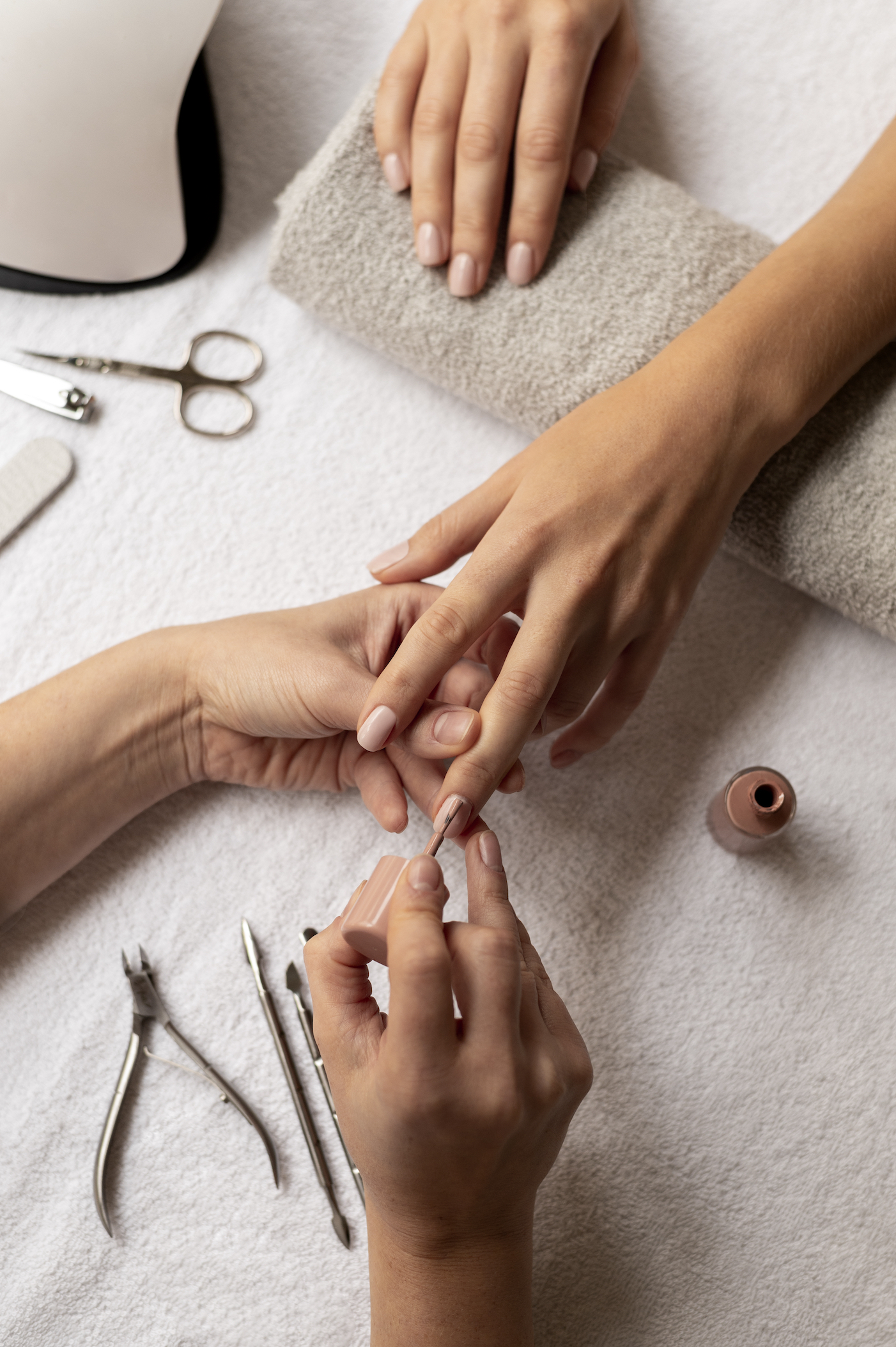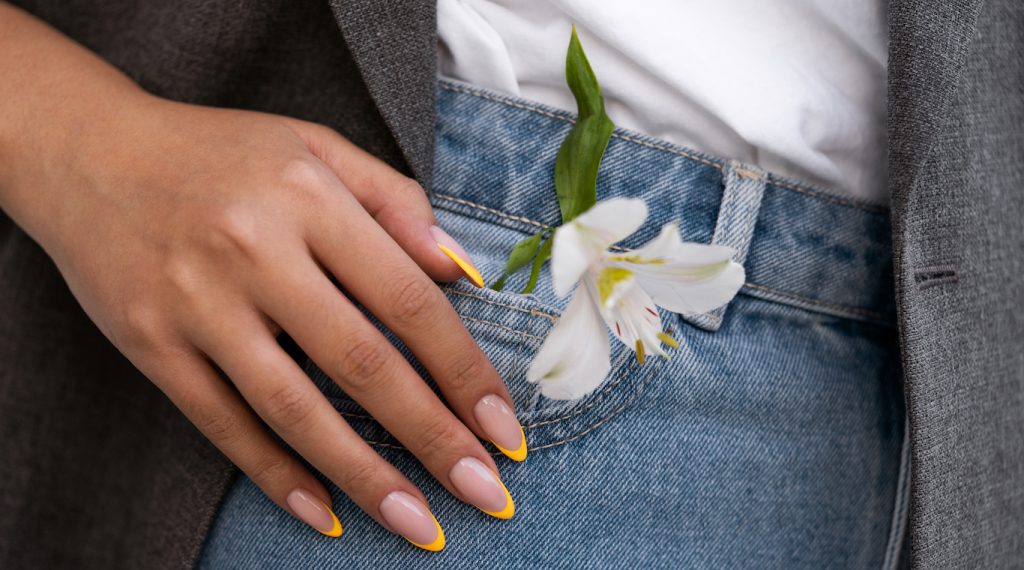From the Met Gala to Cannes Film Festival, the A-list set is showing off perfectly polished nails with a new twist—the Russian Manicure. Recognised for its precision and sleek finish, this manicure technique is in the news, with celebrities like Kylie Jenner and Bella Hadid showcasing the art of the flawless, cuticle-free look. But what makes this trend the go-to choice for celebrities? What are the benefits and risks though and is the nail treatment even legal?

For years the Russian manicure remained a salon secret, with a handful of select nail technicians performing the method. But once it went viral on TikTok, that quickly changed—to the extent that “Russian manicure near me” became one of Google’s top searched beauty queries.
The term Russian manicure refers to a grooming technique, as opposed to a visual style. The Russian Manicure, also known as a dry or e-file manicure, is a nail care technique that uses an electric file for a clean, flawless finish with a focus on precise cuticle work. It differs from traditional manicures by avoiding soaking the nails and using a drill with specialized bits to remove excess skin.
Essentially, it is a combination of precise cuticle work, which can be done using nail bits, scissors, or nippers, and gel overlay. Abrasive brushes are sometimes used for intense exfoliation and drill-like tools and scissors are used to remove cuticle and skin surrounding the nail, which leaves more room for polish. Let’s take a closer look at this manicure, its benefits and its potential risks.
Russian Manicure vs. Traditional Manicure
Russian manicures and regular manicures differ in both technique and results, making each suitable for different preferences and needs. A regular manicure typically involves basic nail shaping, cuticle care, and polish application, often with the use of standard tools and polish finish. It’s a quick, accessible option that provides a clean and polished look, ideal for everyday wear. Regular manicures focus on maintaining healthy nails and achieving a neat appearance, but they do not involve extensive cuticle work or nail enhancements.
Unlike traditional manicures that start by soaking the fingers in warm water to soften the cuticle, Russian manicures skip the soak. This technique involves using an e-file to lift the eponychium and remove the cuticle. That level of precision results in a cleaner, more extended finish. Russian manicures may also include the application of gel or acrylic overlays for durability and length. While time-consuming and costly, Russian manicures are favoured by those seeking a meticulously crafted, long-lasting result that elevates traditional nail care to an art form.
“One great thing about technique is that we do not soak gel in acetone,” Natalie Zheltovski, a Russian manicure expert and educator and owner of Austin’s Nail Art House Academy + Nail Salon, tells Glamour. “We file it down by nail drill, removing 95% of the gel that way and keeping 5% of the product on the nail plate if there is no lifting or chipping. Then we fill it in with structure gel with the same cuticle-cleaning steps beforehand. This helps nails grow and prevents dehydration from acetone, so nails are less likely to break and peel.”

The Process of a Russian Manicure
The Russian manicure begins with meticulous nail preparation, where the nail technician carefully shapes each nail using fine files to achieve a smooth, precise form—whether oval, square, or almond—depending on the client’s preference. The technician then cleans the nail bed, removing any oil, dirt, or residual debris to ensure optimal adhesion for the subsequent layers of polish or gel. This often involves gentle scrubbing with a fine brush or using specialised cleansers, which help create an even surface and prevent chipping.
The defining feature of a Russian manicure is the detailed cuticle work. Using specialized tools such as fine-tipped brushes, cuticle pushers, and nippers, the technician removes excess cuticle tissue and pushes back the cuticles to maximise the nail plate. This step demands precision and skill, as it results in a boundary between the nail and skin, creating the illusion of longer, uniform nails. For example, a well-executed cuticle removal can make short nails appear elongated and elegant, and it also ensures that the polish or gel is applied well without any skin overlapping, giving the nails a polished, sculpted look.
Once the nails are shaped and cuticles perfected, the manicure continues with buffing and sealing. The nail surface is buffed with fine files or buffers to smooth imperfections and enhance the natural shine. Afterward, a base coat or primer is applied to promote adhesion, followed by the choice of polish—often gel for its durability and high-gloss finish. The technician applies multiple thin layers of polish. To finish, a high-gloss top coat is applied, sealed, and cured, resulting in a mirror-like, flawless surface that highlights the clean aesthetic of the Russian manicure.
Benefits of Choosing a Russian Manicure
Choosing a Russian manicure over a traditional or French manicure offers several advantages, primarily centered precision and aesthetic. The meticulous cuticle removal and shaping involved in a Russian manicure create a cleaner, polished appearance. Unlike traditional manicures, which may leave some cuticle tissue intact, the Russian technique ensures that the nail bed is fully exposed and smooth. This meticulous attention to detail results in a crisp, high-end finish that often appears luxurious and professionally done, making it ideal for special occasions or clients seeking a flawless, sophisticated appearance.
Another significant benefit is the durability and longevity of the Russian manicure. Since the process involves thorough prep work, including precise cuticle removal and sealing with gels or polishes, the finished nails tend to resist chipping, lifting, and peeling longer than a standard manicure. Additionally, because of the clean finish, the Russian manicure provides a natural enhancement that can be customised with colors and finishes, from glossy to matte, offering versatility that surpasses traditional or French styles. Overall, the Russian approach combines aesthetic excellence with durability, making it a preferred option for those who desire a meticulously crafted, long-lasting manicure.

Is it safe?
While a Russian manicure offers aesthetic benefits, it carries certain risks, primarily due to extent of cuticle removal involved. The main concern is the potential for over-aggressive cuticle cutting or removal, which can damage the nail matrix or surrounding skin, leading to infections, inflammation, or nail deformities. The use of sharp tools such as nippers increases the risk of accidental cuts or punctures.
When you’re drilling closely into the nail bed rather than soaking using foils and acetone, there are a number of risks. Nail artist Naima Coleman tells Harpers Bazaar. “In the hands of a trained professional, it is safe, but with an inexperienced newbie, not so much… I don’t like to offer this service as it is the complete removal of the cuticle, which, if done repetitively, can result in a nail infection called chronic paronychia… We also shouldn’t be removing skin surrounding the nail plate at all. This can cause excessive damage to the skin, along with redness, excessive regrowth of hardened callus tissue, itching, allergies, etc.”
Since the process involves extensive removal of cuticle tissue, there is a higher chance of exposing the nail bed to bacteria and fungi, which can result in infections if proper sterilisation procedures are not maintained. “Its function is to protect the area between the nail and epidermis from exposure to bacteria,” Dr. Desai tells refinery29. “By removing it, there is a real risk of infection, so I would never recommend it.”
How to Achieve a Russian Manicure at Home
The risk of performing a Russian manicure at home primarily stems from the use of specialized tools and techniques that require skill and precision. Russian manicures involve the use of electric drills and high-speed files to meticulously remove dead skin and shape the nails, which, if not handled properly, can lead to damage such as nail thinning, infections, or nerve injuries. Additionally, improper sanitation of tools and inadequate ventilation can increase the risk of bacterial or fungal infections. Without professional training, there’s also a chance of over-filing or applying excessive pressure, which can weaken the natural nail and cause long-term damage.
To achieve a Russian manicure at home safely, it’s essential to gather the right tools, such as a high-quality electric nail drill, cuticle pushers, and disinfected files. Start by thoroughly sanitising all instruments before use and work in a well-ventilated area. Begin with gentle, slow movements when using the drill, focusing on removing dead skin and avoiding the live tissue or nail plate. Applying cuticle oil before and after the procedure helps maintain healthy skin and nails. Precautions include not over-filing or applying excessive pressure, taking breaks to prevent hand fatigue, and knowing when to seek professional assistance if you’re unsure about technique or experience any discomfort.
10 FAQs about Russian Manicure
What is a Russian Manicure?
A Russian manicure is a dry manicure technique that uses an electric file (e-file) to precisely clean and shape the cuticles without soaking the nails in water. This technique helps achieve a neater, more polished look.
Is it safe?
When performed by a skilled technician, the Russian manicure is safe. However, it’s essential to ensure the technician uses sanitised tools to avoid any risk of infection.
How long does it last?
The results of a Russian manicure can last 2-3 weeks, depending on how well you maintain the nails and cuticles after the service.
What makes it different from a regular manicure?
The primary difference lies in the cuticle care. Russian manicures use an e-file to remove dead skin and shape the cuticles, whereas regular manicures often rely on soaking or pushing back the cuticles manually.
Can I get a Russian manicure if I have sensitive skin?
Yes, but it’s important to inform the nail technician of any skin sensitivities beforehand. Gentle techniques can be used to minimize irritation or discomfort.
Does it hurt?
If done correctly, a Russian manicure should not be painful. Some people might feel a slight tingling or tickling sensation, but it shouldn’t cause discomfort.
Is it suitable for all nail types?
Yes, the Russian manicure can be performed on all nail types, including natural, acrylic, or gel nails. It’s particularly beneficial for people with overgrown cuticles.
How often can I get a Russian manicure?
You can safely get a Russian manicure every 2-3 weeks, but it’s important to give your nails time to breathe and recover between treatments.
Do I need to maintain my nails after a Russian manicure?
Yes, maintaining your nails involves moisturizing your cuticles regularly to avoid dryness and breakage. Cuticle oils are highly recommended for keeping the nails healthy.
Can I do a Russian manicure at home?
While it is possible, it’s recommended to visit a professional due to the specialized tools and techniques involved, including the use of an electric file.

Jasmeen Dugal is Associate Editor at FashionABC, contributing her insights on fashion, technology, and sustainability. She brings with herself more than two decades of editorial experience, working for national newspapers and luxury magazines in India.
Jasmeen Dugal has worked with exchange4media as a senior writer contributing articles on the country’s advertising and marketing movements, and then with Condenast India as Net Editor where she helmed Vogue India’s official website in terms of design, layout and daily content. Besides this, she is also an entrepreneur running her own luxury portal, Explosivefashion, which highlights the latest in luxury fashion and hospitality.











